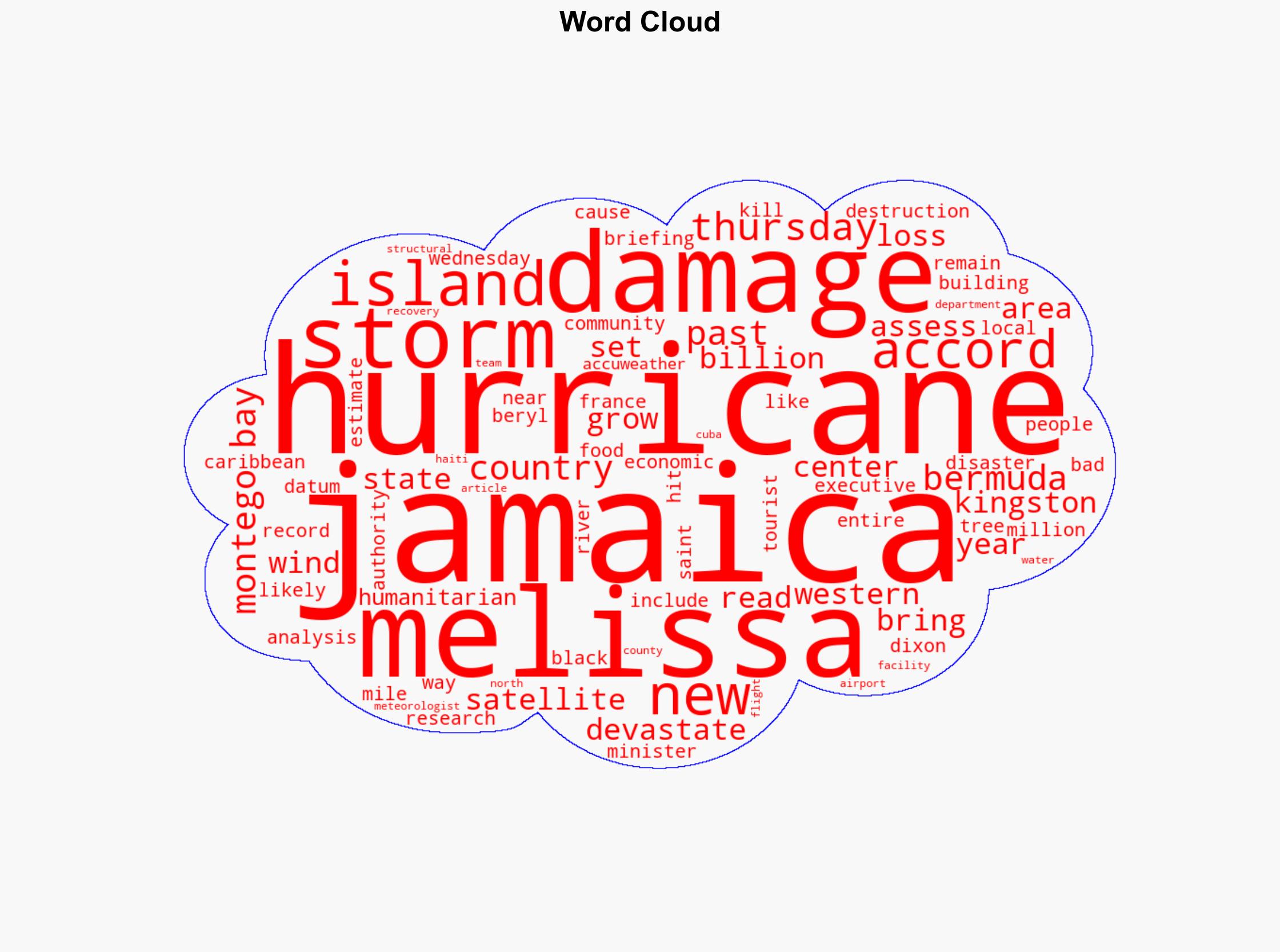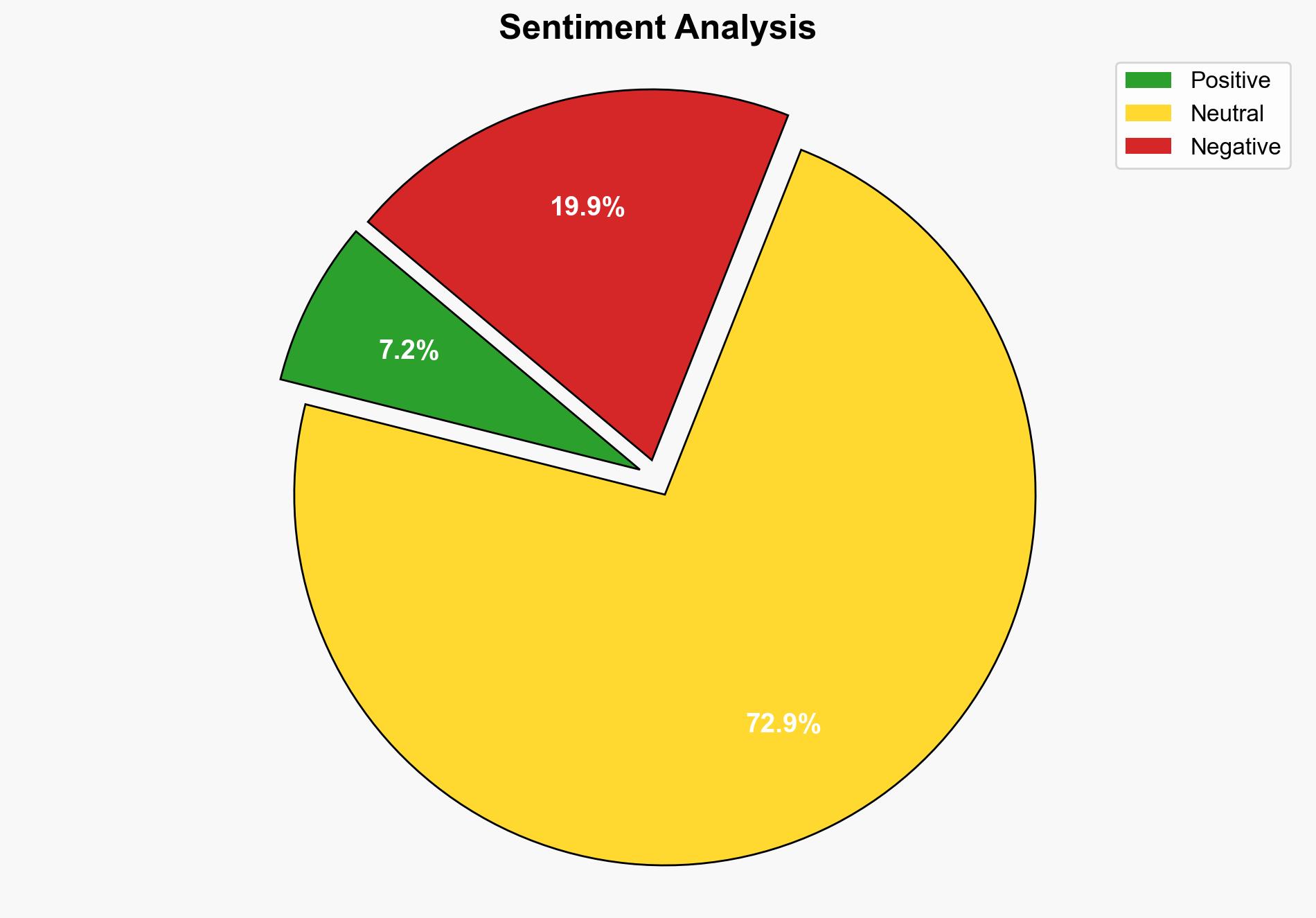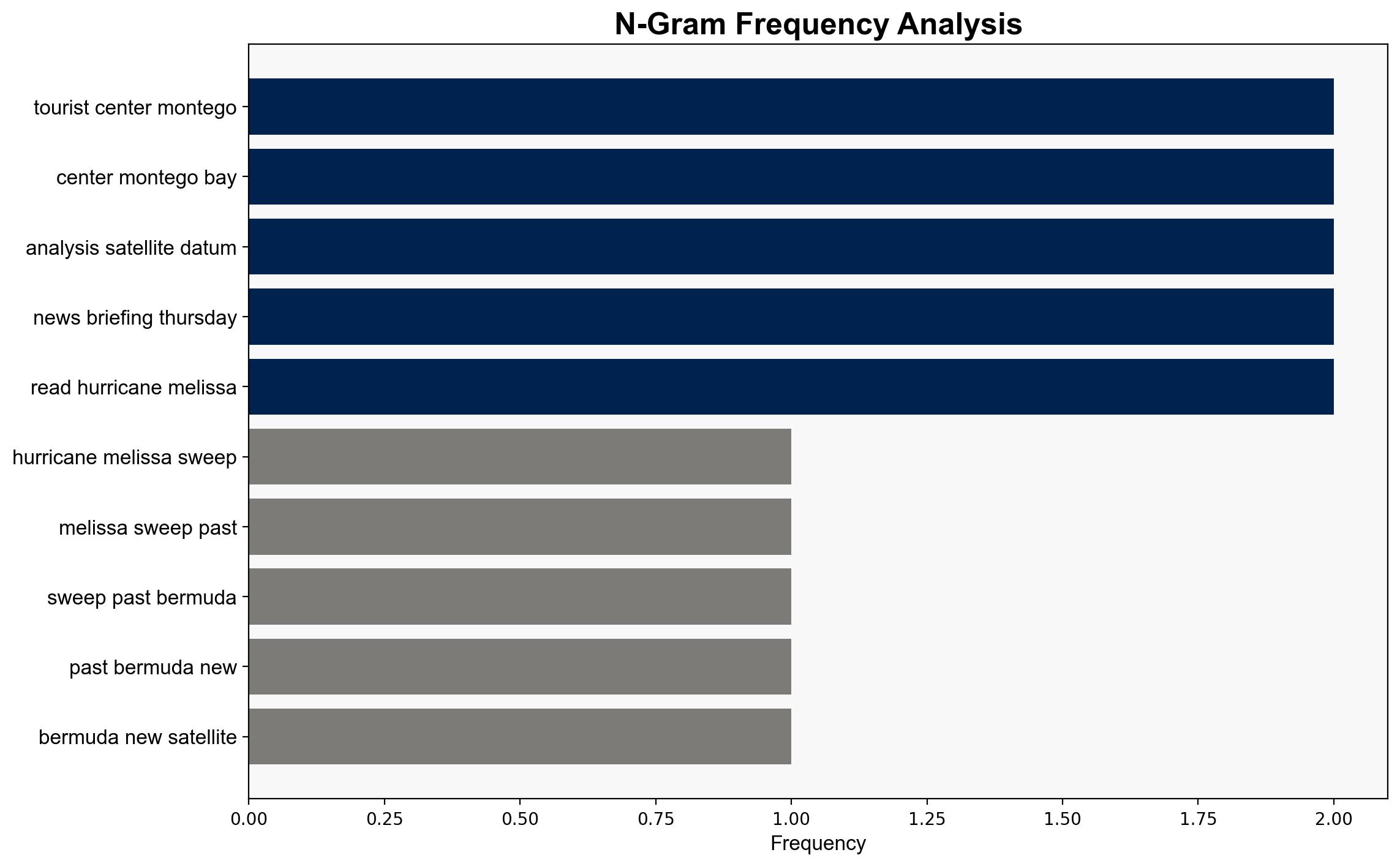Satellite Data Reveals Hurricane Melissa Damage in Jamaica – Insurance Journal
Published on: 2025-10-31
Intelligence Report: Satellite Data Reveals Hurricane Melissa Damage in Jamaica – Insurance Journal
1. BLUF (Bottom Line Up Front)
Hurricane Melissa has caused significant damage in Jamaica, particularly in the western regions, impacting infrastructure, agriculture, and tourism. The most supported hypothesis is that the economic impact will be severe, with long-term recovery challenges. Confidence level: Moderate. Recommended action: Prioritize international aid coordination and infrastructure rebuilding efforts.
2. Competing Hypotheses
1. **Hypothesis A**: The damage caused by Hurricane Melissa will have a long-term detrimental impact on Jamaica’s economy, particularly affecting the tourism and agricultural sectors.
2. **Hypothesis B**: The damage, while severe, will be mitigated by effective international aid and rapid recovery efforts, resulting in a quicker economic rebound than initially expected.
Using ACH 2.0, Hypothesis A is better supported due to the extensive damage reported in key economic areas and the historical challenges faced in similar recovery scenarios.
3. Key Assumptions and Red Flags
– **Assumptions**: The extent of damage is accurately reported; international aid will be timely and sufficient.
– **Red Flags**: Potential underreporting of damage in remote areas; reliance on historical recovery patterns without considering current global economic conditions.
– **Blind Spots**: Lack of detailed information on infrastructure resilience and local government capacity to manage recovery.
4. Implications and Strategic Risks
– **Economic Risks**: Prolonged disruption in tourism and agriculture could lead to increased unemployment and economic instability.
– **Geopolitical Risks**: Dependency on international aid may affect Jamaica’s foreign policy and regional influence.
– **Psychological Risks**: Prolonged recovery could lead to public dissatisfaction and potential social unrest.
5. Recommendations and Outlook
- Immediate action: Coordinate with international organizations to expedite aid and support infrastructure rebuilding.
- Mid-term action: Develop a comprehensive disaster recovery plan focusing on economic diversification and resilience building.
- Long-term action: Invest in infrastructure modernization to withstand future natural disasters.
- Scenario Projections:
- Best Case: Rapid international aid leads to a swift recovery, stabilizing the economy within two years.
- Worst Case: Delayed aid and ineffective recovery efforts result in prolonged economic downturn and social unrest.
- Most Likely: Gradual recovery with sectors like tourism taking longer to rebound, requiring sustained international support.
6. Key Individuals and Entities
– Kerry Lee Lynch
– Dana Morris Dixon
– Damien King
– Chuck Watson
– Scott State
7. Thematic Tags
natural disaster impact, economic recovery, international aid, regional stability




